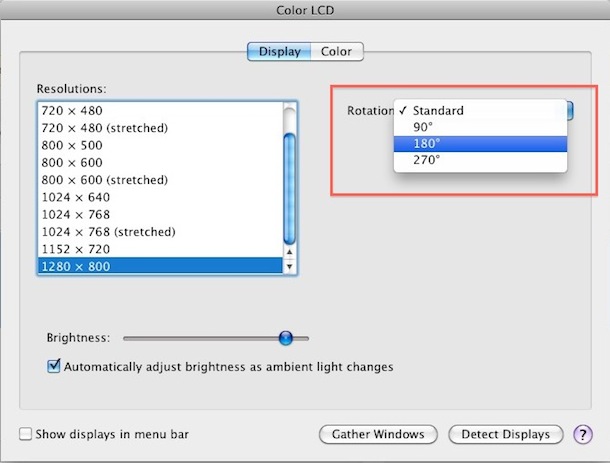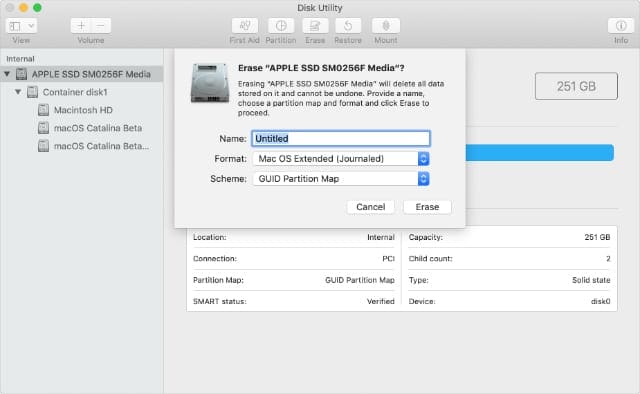Tand Mac OS

OpenGL support tested to work for Mac OS X. 24 bit RGB PNG images are now supported in addition to 32 bit RGBA. Audio clipping range changed from betwenn -32768 and 32767 to now -32767 tand 32767. Cleanup for the command tcl help. Cosmetic cleanup for command audio sink status. Pro Display XDR. A new 32-inch Retina 6K display with extreme brightness, contrast, color accuracy, and HDR that transforms the way you work. No, we do not have any software available for use with MAC OS or OS X. Related Products. Update: September 08, 2016. Choose Numbers Preferences (from the Numbers menu at the top of your screen). Click Auto-Correction at the top of the preferences window. In the Formatting section, select the “Automatically format fractions” checkbox. Type a fraction (for example, 1/2), then press the Space bar and keep typing, or press Return. If this is the first time you have connected to the target then Mac OS will prompt you to format the disk. The target’s status changes to Connected. The new drive is ready to use and appears on the Mac OS desktop. Connecting to an iSCSI Target using Open-iSCSI Initiator on Linux.
| Mac OS-tan | |
| [[File: 250px]] | |
| Character information | |
|---|---|
| Common name | Mac-tan |
| Also known as | OSX-tan, Shian |
| First appearance | Unknown |
| Height | varies |
| Hair color | blonde |
| Eye color | blue-green |
| Weapon(s) | error bombs |
| Faction | House of Mac |
| Lineage | Classic Mac and/or OSX |
| Rival(s) | the Windows Family, in particular 95-tan. |
| Technical information | |
| System personified | Intended to be all Mac OSes. |
| Developer(s) | Apple Inc. |
| Debut | January 24, 1984 (if she represents all Macs) |
| Latest release | v10.6.6 |
- 2What does she represent?
Character details
Personality-wise, Mac OS-tan is short-tempered, and is known to throw memorable fits of insane rage when angered. Aside from her platinum-white bodysuit and apple adornment on her head, another memorable feature is the bomb she usually carries based on the standard Macintosh error dialog. She is frequently shown in pictures and comic strips trying to use these bombs against Windows-tans and other miscellaneous characters that annoy her (e.g., Toshiaki, the OSX-kuns). When offered appreciation, however, her temper subsides and she becomes relatively friendly, if perhaps a bit direct.
What does she represent?
Early depictions: Originally a catch-all for Systems 1-8?
Mac OS-tan was perhaps the first commonly-known and widely-supported Mac-tan during the early days of the OS-tan phenomenon. Given the popularity of the Windows platform, it is likely that Mac OS-tan was simply meant to be a standalone personification of the Mac Operating System, in the same way that Linux-tan was meant to be a lump-sum of all Linux distributions.
In early drawings, Mac-tan appears in her standard platinum-white body suit (alluding to the iMac/OSX design motif) but, also with a rainbow-colored apple on her head, a throwback to the classic Macintosh. Some manga strips also featured her battling against Windows 95-tan during the OS-tan Wars, during which time only the Classic Macs were available (System 7.5, for example), suggesting that she mainly represented the pre-OS9 Mac OSes at first. Even when she represents OSX, 95-tan is still portrayed as her arch-nemesis.
Alternate depiction: A catch-all for Mac OSX?

However, as Mac OS9-tan and additional classic Mac and OSX personifications begain to emerge, the identity of the original Mac OS-tan has been subject to extensive variation. In recent years, artists have increasingly personified her specifically as Mac OSX-tan rather than as a classic Mac OS; even the apple she wears on her head is now increasingly drawn as red, or composed of a transulcent material reminiscent of the early G3 iMac designs. Some fan-based manga completely embrace and build upon the OSX-tan preference. Nevertheless, the OSX classification is not clear-cut either as numerous cat-themed Mac OSX-tans have appeared since, five of which have achieved near-canon status.
As a legacy from her earliest portrayals, even when she's a catch-all only for OSX, she is still seen wielding error bombs, when the error bombs were only in the Classic Mac OS and not OSX. Instead, OSX has a spinning beach-ball cursor as its loading and error cursor, but that is seldom, if ever depicted in drawings of OSX-tan. One justified possibility could be that although OSX doesn't use error bombs, the early versions of OSX supported dual-booting or emulating Mac OS9.
The Mac Manga portrays her as being OSX-tan, and in drawings of her and OS9-tan in their childhood, OSX-tan is portrayed as obviously being the younger one.
Her nickname of Shian is the Japanese pronunciation of 'Cyan', the codename of the OSX Public Beta; another possible representation that would allow her to represent OSX while co-existing with the other OSX-tans.
Or a catch-all for all Macs?
In order to avoid confusion, it is suggested that Mac OS-tan remain as a generic personification of all Macintosh Operating Systems, despite the recent additions of Mac-tans representing specific system releases. This will help preserve the artistic and editorial integrity of the works produced featuring Mac OS-tan, as she is still drawn today, even alongside various Classic and OSX Mac-tans.
See also:
This is a TWAIN datasource for MacOS X that aquires images using theSANE backend libraries. The SANE backend libraries provide access to alarge range of scanners connected through SCSI or USB. For a completelist see the documentation on the SANE project homepage. Itworks with my HP SCSI scanner, and many people have reported successwith a large number of different scanners. The feedback from usershave helped the SANE developers to fix problems with various backends,so with each release of the SANE backends more of the MacOS X specificproblems have been solved.
The TWAIN SANE interface is not a standalone application. It isdesigned to be used from within other applications. It works withapplications supporting the TWAIN specification, which includes mostapplications on Mac OS X that handles images. However using it withApple‘s Image Capture application has become increasingly tricky withevery version of Mac OS X. You will have an easier experience if youchoose any other application.
The TWAIN SANE Interface is provided as a binary package and as sourcecode. To use the interface you only have to install the binarypackage. Before installing the TWAIN SANE Interface package you shouldinstall the libusb and the sane-backends binary packages.
There is also a optional SANE Preference Pane package available, whichmakes it easier to configure the sane-backends drivers. If you don’tinstall this package you can still configure the sane-backends using atext editor in the Terminal.
If you have trouble making it work, please consult the list of frequently asked questions.
If you want to compile the sources you also have to install thegettext package. If you are cross-compiling using the MacOS Xcross-compilation SDKs you need to install the corresponding SDKs forthe used packages.
You are welcome to contact me at mattias.ellert@physics.uu.seif you want to have more information about the TWAIN SANE Interface,or if you want to submit bug reports, localizations errors,suggestions for improvments or patches.
The latest version is 3.6.
Mattias Ellert
Downloads
| Version | Installer | Sources | Project Homepage |
| TWAIN SANE Interface | 3.6 | http://www.ellert.se/twain-sane/ | |
|---|---|---|---|
| SANE Preference Pane | 1.6 | http://www.ellert.se/twain-sane/ | |
| SANE backends | 1.0.25 | http://www.sane-project.org/ | |
| libusb | 0.1.13 beta | http://www.libusb.org/ | |
| gettext | 0.19.8.1 | http://www.gnu.org/software/gettext/ |
Older versions.
Release Notes
TWAIN SANE Interface version 3.6, 2017-05-26
- Compiled for macOS 10.9 or later.
SANE Preference Pane version 1.6, 2017-05-27
- Compiled for macOS 10.6 or later
Tand Mac Os X
sane-backends version 1.0.25, 2017-05-22
Mac Os Mojave
- Compiled for macOS 10.9 or later
- Stop building SDK packages
libusb version 0.1.13 beta, 2016-11-02
- Compiled for macOS 10.9 or later
- Stop building SDK packages
Tand Mac Os X
gettext version 0.19.8.1, 2017-05-21
- Compiled for macOS 10.7 or later
- Stop building SDK packages
Localizations
The TWAIN SANE Interface has been localized to the followinglanguages: English, French, German, Italian, Japanese, Russian andSwedish. For most of the translation it relies on the localizationsupport in the SANE backend libraries.
If you want to provide localization support for a different language you arewelcome to do that. What you should do is the following:
- You might want to check with me that I did not already recieve thelocalization for your language from someone else...
- First check if there exists a file called/usr/local/share/locale/〈langcode〉/LC_MESSAGES/sane-backends.mocontaining the localizations for the SANE backend libraries for your language.If there is no such file you must first localize the SANE backend libraries.For more information about this see theSANE project homepage.
- Download the TWAIN SANE Interface source code.
- After unpacking the source tarball you will find in it a directory called src.In this directory there is one language project directory for each language(English.lproj, Swedish.lproj, etc.). In these directories there are two filescalled InfoPlist.strings and Localizable.strings.
- You should create your own copy of these two files and change the translations.These files contain several lines of the type 'key' = 'value'. Do not changethe keys, but translate the values. Note that these files should be in theUTF-8 encoding.
- There is also a set of language project files in the pkg/Resourcesdirectory. These contain localization files for the Installer called.If you want you can also provide localized versions of these. Thesefiles are also of the 'key' = 'value' type and should also be in theUTF-8 encoding.
- Send the files to me, and I will include them in my next release.
Mattias Ellert